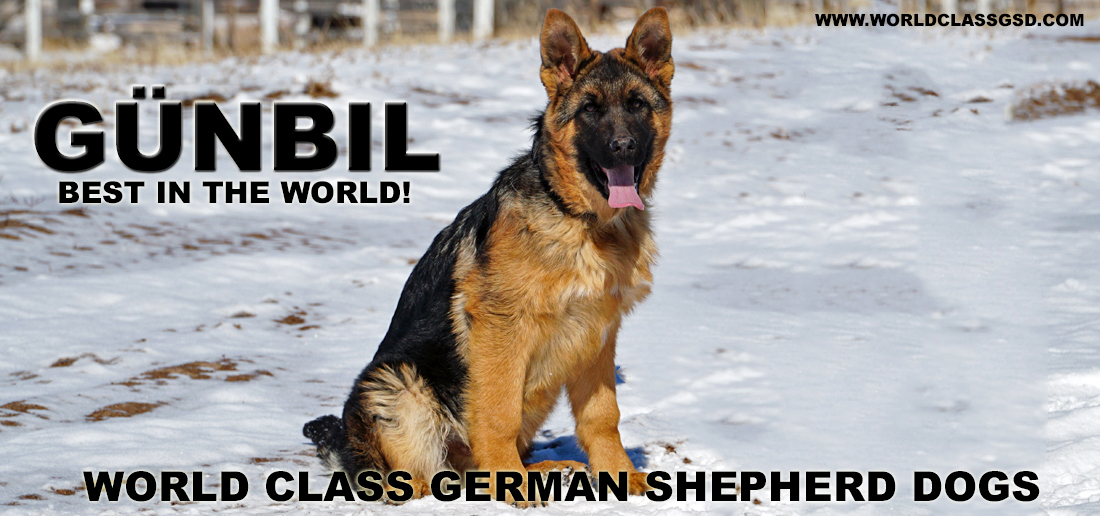
Canine Panosteitis
Ligaments and muscles are still growing and forming in young dogs. I have found that ligamentation and conditioning can be compromised considerably during the painful stages of Pano due to the lack of exercise.
Panosteitis, or Pano as it is commonly called, is a disease which affects the long bones in growing young dogs, mostly of the larger breeds, but occasionally is seen in some smaller breeds as well. German Shepherds are one of the breeds who are often presented with lameness and limb pain between 5 and 18 months of age, and many veterinarians diagnose Pano as it's cause.
The first signs of Pano are often a slight lameness in one leg, progressing to a severe limp and possibly non-use of the affected leg. It may last for days to weeks, and may seem to resolve then recur in the same leg, or another one. Some dogs can exhibit lameness in more than one, or even all legs at the same time. Often Pano shows up in a foreleg first. Bouts of lameness can come and go, seemingly for months. Some dogs suffer from Pano off and on until they are nearing 2 years of age or even beyond. I believe a case has been documented in a 5 year old dog, but that is unusual. Most cases start near the end of rapid growth, about 5 to 6 months of age, and are cleared up by 12 to 18 months of age. Males seem to be more affected than females, but both sexes can exhibit signs.
Radiographic signs, those seen on an x-ray, can be elusive when diagnosing Pano. The bones most affected are the radius and ulna (the foreleg), the humerus (upper arm), the femur (thigh) and the tibia (lower rear leg). Pano is an inflammation of the bone itself, the cortex (outer shell) becomes less distinct and foggy, and the interior of the bone seems to increase in density.
Pano lesions are not always seen on an X-ray even though the dog may be showing clinical signs of lameness and pain.
No definitive reason is really known for the cause of Pano. It has been attributed to high protein levels in food, high fat intake, growth spurts, lack of different vitamins or minerals, too much of certain vitamins or minerals, environmental causes, bacterial infections, parasite infections and many other non conclusive reasons. People have reported that high doses of Vitamin C will help to alleviate the onset of Pano, or the symptoms when they occur, and others swear by antibiotic treatments, holistic and natural approaches and even acupuncture and chiropractic treatments.
For the most part, Pano will occur and run it's course; it is a self limiting disease and will subside on it's own regardless of treatments. Analgesics can be given, but in a lot of cases the relief from pain is minimal. Some report cessation of symptoms after neutering, which may be an indication of association between stress and hormonal changes, but this is unproved as well.
Maintaining good nutrition during bouts of Pano is important, as many dogs who are feeling pain will have a depressed appetite too.
Ligaments and muscles are still growing and forming in young dogs. I have found that ligamentation and conditioning can be compromised considerably during the painful stages of Pano due to the lack of exercise. Dogs should be encouraged to exercise lightly between episodes, but hard running and very long walks should be excluded until the Pano is gone for good, and is wise to limit in young dogs even if they are not afflicted with Pano
Panosteitis
In closing, Panosteitis is not a serious disease, however, it is a very painful one for dogs to suffer. A few words of caution should be remembered when diagnosing lameness in young dogs. To be sure of a Pano diagnosis, other bone abnormalities should be looked for and ruled out first.
Ununited Anconeal Process (elbow dysplasia) is evident radiographically in puppies at 4 to 6 months of age, and sudden lameness on the front legs is reason enough to x-ray for this problem, and it's an increasing one in German shepherds. Other bone and joint abnormalities in the elbow and shoulder such as Fragmented Cornoid Process (FCP) and other conditions associated with Osteochondrosis Dissicans can be evident and should be ruled out as well.
Preliminary x-rays for Canine Hip Dysplasia (CHD) should be done if a dog is limping on a rear leg, or shows weakness on arising, or a tendency to "bunny hop" with both rear legs rather than trot smoothly when moving.
Too often lameness and leg favoring are attributed to Pano, when in fact the cause is due to a serious and detrimental disorder. When all else is ruled out, or Pano lesions are actually seen on an x-ray you can feel a bit of comfort knowing your puppy will "grow out of it" and be limp free once again.
- All About German Shepherd Puppies
- Pet Disease and Allergies
- Hips and Elbows
- German Shepherd Dog Anatomy
- What is Schutzhund
- German Shepherd Behavior
- Quick Tips On German Shepherds
- Our Show Dogs










